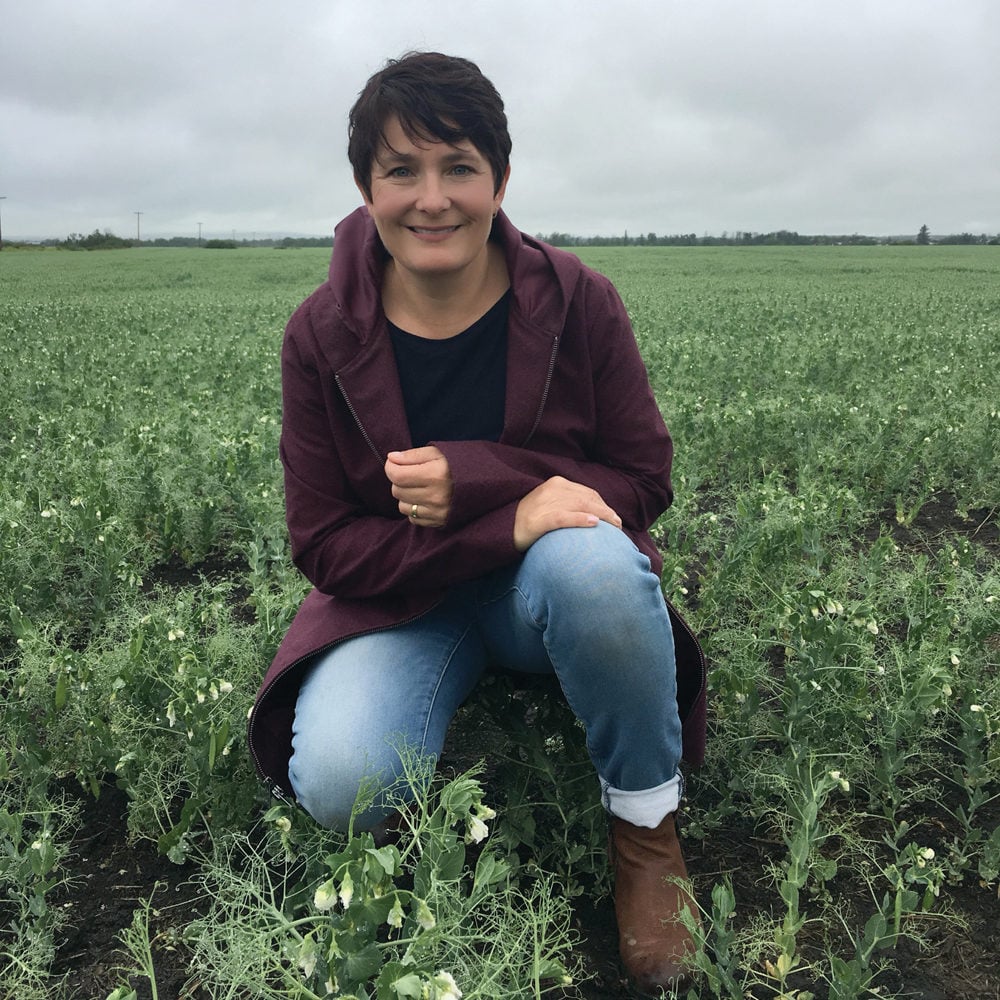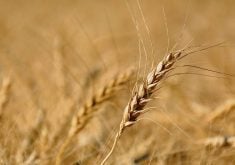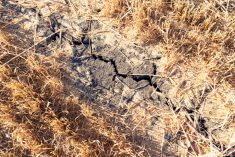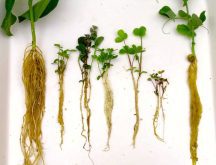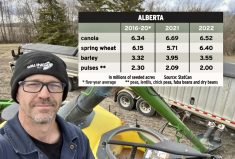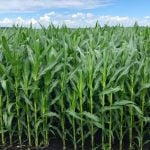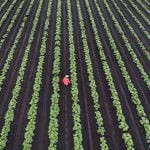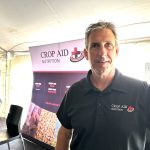Caroline Sekulic just got back from the biggest pulse convention in the world — and she has a message for Alberta farmers.
“We have to stay competitive and we have to keep on it with our market access initiatives,” said the Peace Country farmer, who was one of five Alberta pulse growers at the conference in mid-July.
But her trip to the Pulses 2017 — The Future of Food convention in Vancouver in mid-July also convinced her the payoff will be big. The event drew a record 1,200 attendees — traders, exporters, importers and pulse representatives — from more than 50 different countries.
Read Also
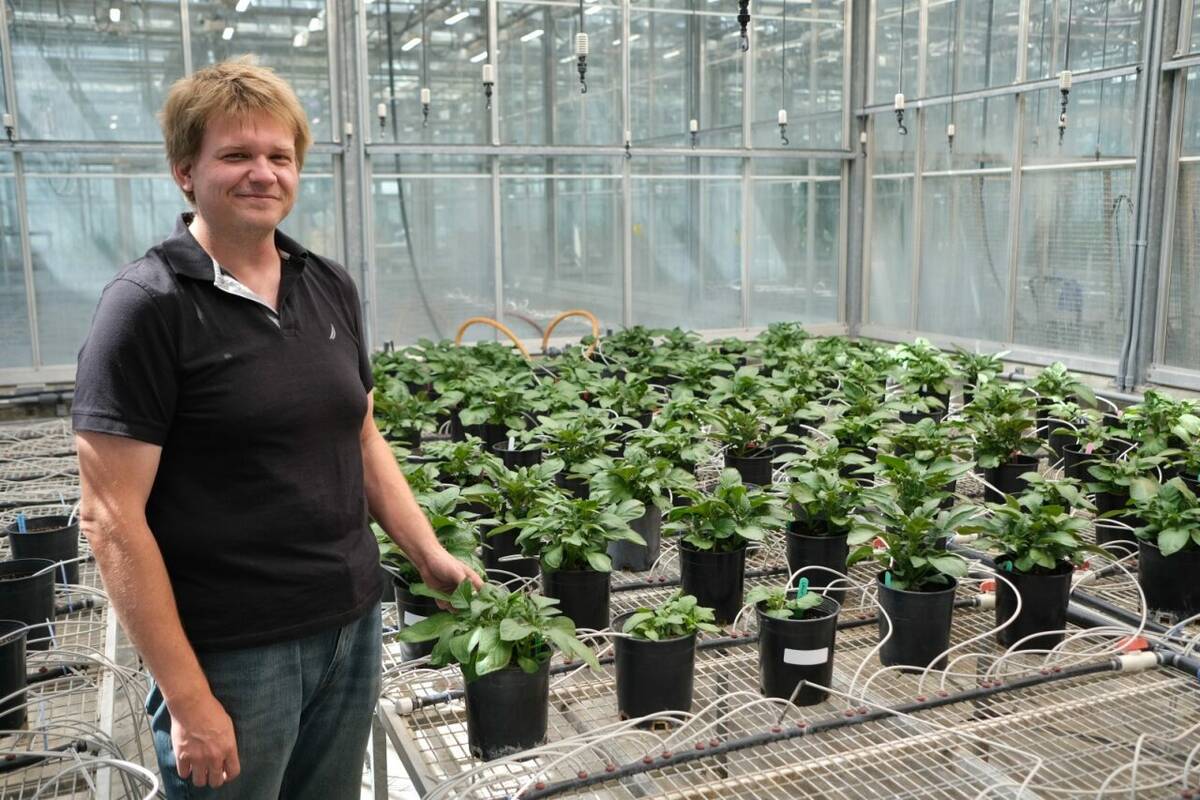
Hail research hopes to benefit potato growers
Alberta research scientist measures hail storm and heat dome affects on potato crops
“You start to understand how big the global pulse industry is,” said Sekulic, who sits on the board of the Alberta Pulse Growers Commission and Pulse Canada.
“I don’t think there are a lot of producers (at the event) — this is a conference that brings together the international trade market. It’s interesting to be a producer there, because a lot of the traders want to know what our year looks like. They want to know what our supply is going to be.”
It was clear that global demand for pulses is definitely on the upswing.
“It’s become quite apparent, there’s a pull (market) now, it’s not so much a push.”
But there is also more competition and more players are entering the export market.
The traders like meeting producers, because they get to know more about the origin of their product, and the five Alberta attendees ended up being “the face of Canadian farmers” for the traders, she said.
“They’re always willing to engage and have a conversation. Our land base and our geography is so different from theirs, so it really is quite a stretch for some of them. Once you say you’re a Canadian producer, they’re really interested.”
Another big takeaway for Sekulic was that North America demand has increased.
“The domestic demand was driven by the International Year of Pulses, and some of the marketing, social media and domestic initiatives to include pulses as part of healthier fractions in food we eat,” she said. “Really, it’s just a good message because it is very sustainable to grow pulses. We have seen a huge increase.”
Pulses are going to be around for a long time and will provide stable returns for Canadian farmers, she said.
“We’re doing our best with the commissions — Pulse Canada, and our provincial commission — to direct that, and make sure that’s the case,” she said.
Sometimes producers may not see the effect of their levy dollars, but Sekulic said she has witnessed them first hand from her experience with both the Alberta Pulse Growers Commission and Pulse Canada.
“Levy dollars do go to marketing initiatives for the products we grow,” she said. “And it’s really important to do some of that in order to maintain our markets. It’s going to get more competitive out there for our products as well.”
Alberta producers can keep pace, but they need to be aware that they need to stay competitive, she said.
Demand remains high for yellow peas, green peas, and dried beans, while pulse fractions and initiatives to develop pulse protein are increasing demand, said Sekulic, who grows peas and fababeans along with other crops and cattle on her farm.
She said she was told repeatedly that Canadian producers need to be steady and reliable, especially when it comes to transportation and shipment.
Focusing on science is also important, as is maintaining the registered use of fungicides and herbicides. If Canadian producers lose their access to these kind of products, it could hurt them as they compete with countries without as many regulations.
“There are a lot of players, and it’s confusing. But we do, from what I hear, one of the best jobs around.”
Next year’s global pulse conference will be held in Turkey.


